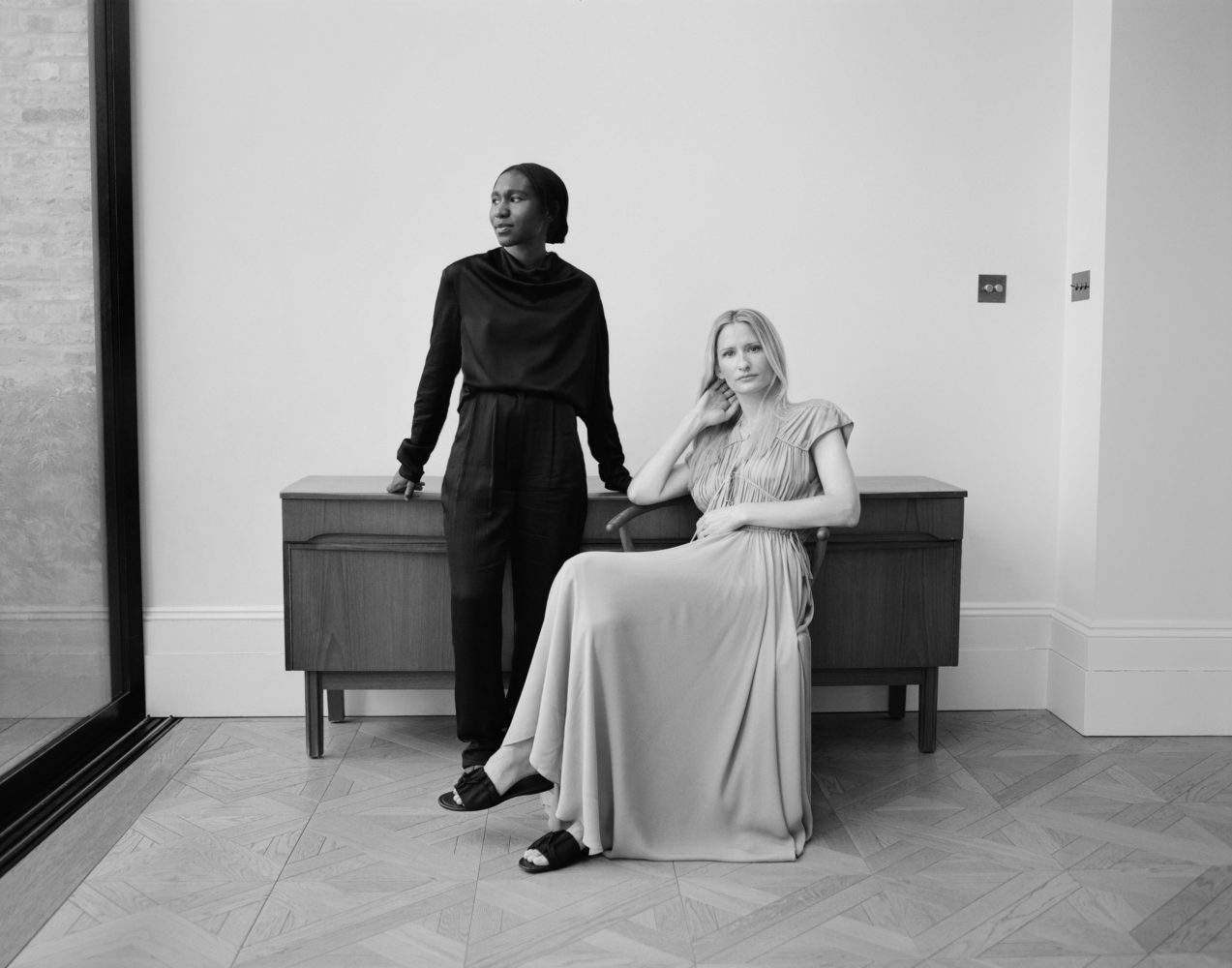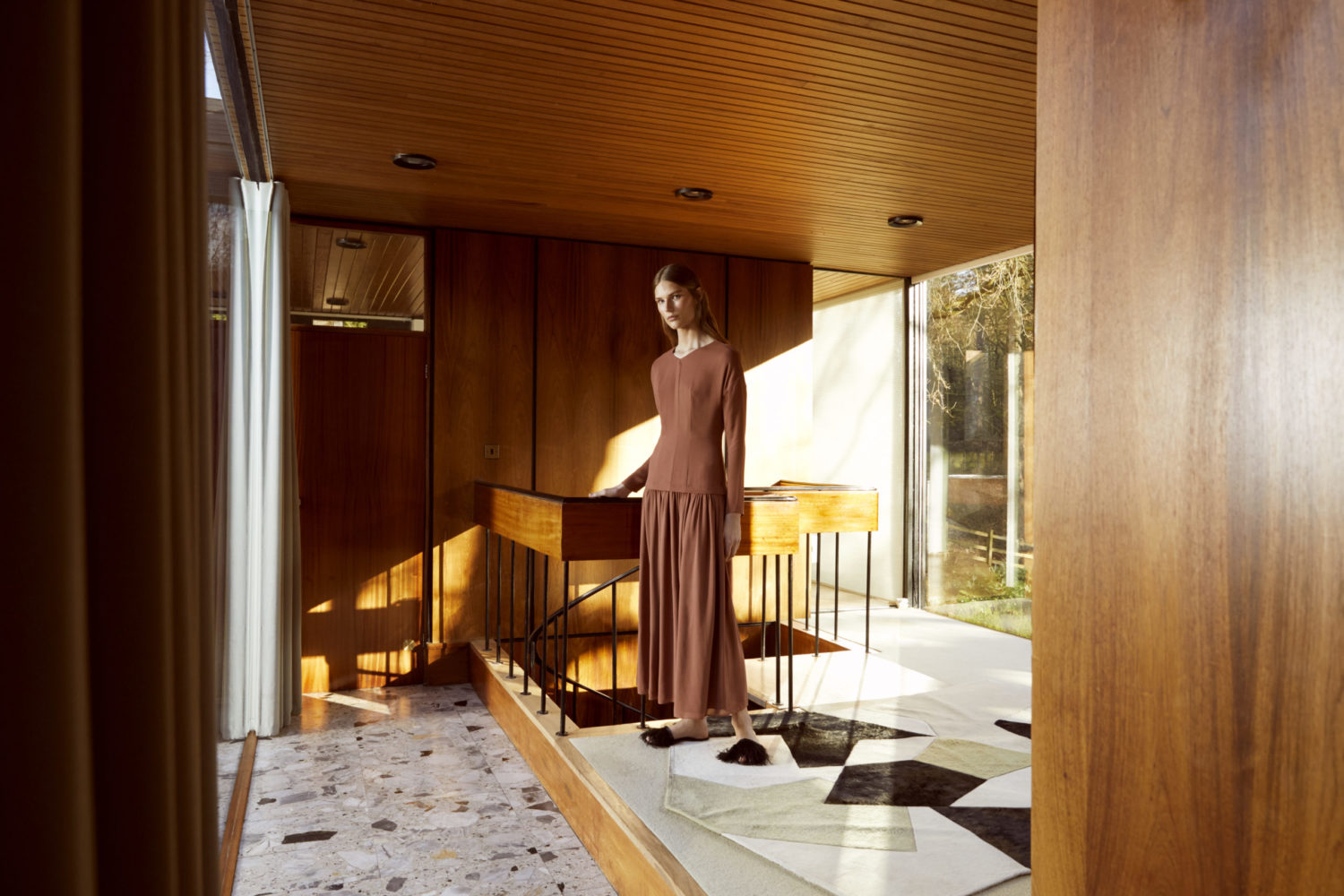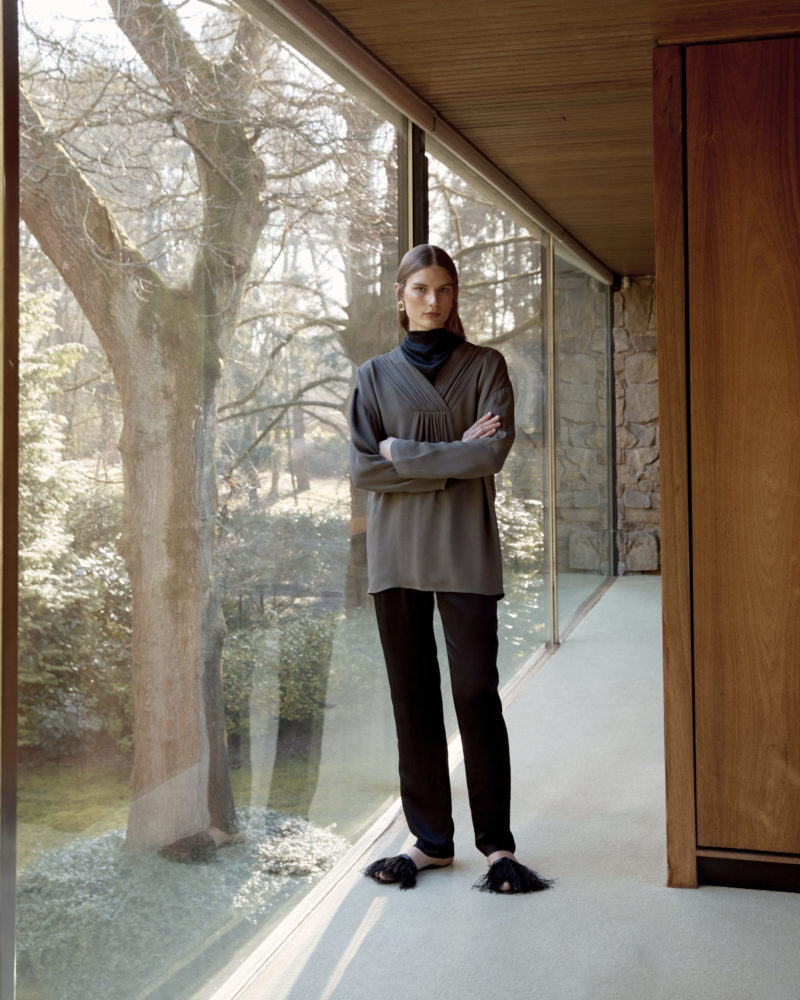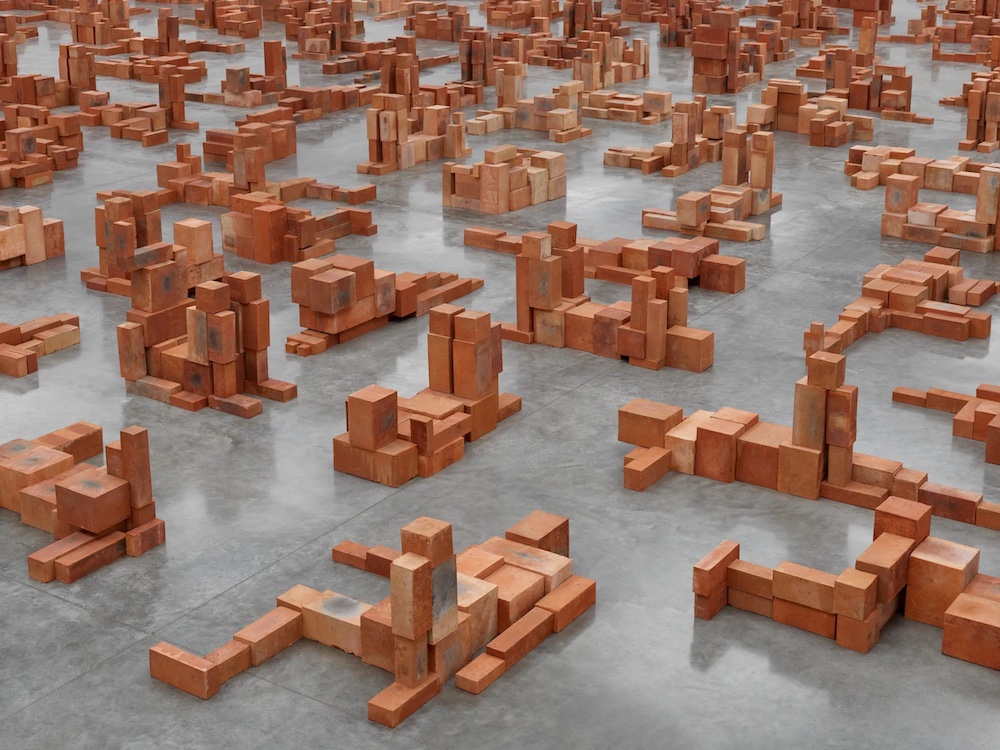Camille Perry and Holly Wright worked together for seven years at the fashion retailer Topshop. Perry was a buyer and Wright was a designer, but both realized there were substantial issues within the fashion industry. In response, and shortly after each gave birth to her second child, the duo founded TOVE last year in London.
The conscious luxury label, whose name is derived from a Danish one meaning “strength” and “beauty,” focuses on creating timeless pieces through responsible production. Elegant, understated clothing with clean lines and simple details mirror the contemporary women of today. As mothers, Perry and Wright believe that women work hard so their clothing needs to work harder, and modern, quality pieces can do that.

Camille Perry (L) & Holly Wright (R), portrait by Harry Crowder.
Whitewall spoke with Perry and Wright about mindfully creating clothing and what’s new for the brand this fall.
WHITEWALL: How did TOVE come about in May 2019?

TOVE Fall/Winter 2020, photo by Georgia Devey Smith, courtesy of TOVE.
CAMILLE PERRY: We recognized that we had the same love for things. There was a disparity in the market, and we felt no one was addressing modern feminine pieces, with a focus on quality, craft, and design. We had two children each, at very similar times, and it all started to happen organically after that.
HOLLY WRIGHT: The gap between premium and luxury kept getting bigger. That was something we wanted to fill. A shift in our lives also caused us to move away from a big corporate environment and carve out some time for our families. We wanted to be more present for them.

TOVE Fall/Winter 2020, photo by Georgia Devey Smith, courtesy of TOVE.
WW: How does being a mother impact the mission of TOVE?
CP: The pieces need to work hard for the wearer. Not only should it be well priced, but it should be a useful piece to have in your wardrobe. And as a mother, we need functionality, being able to wear the garment to multiple venues and occasions.
We also wanted to create an environment that women want to work in. A lot of people work from home, and we’re flexible in terms of how people are working. It’s realistic. We wanted to work with other people, and not just have them work for us.
WW: Can you tell us how TOVE maps out responsible sourcing and a transparent supply chain?
HW: We’ve been lucky with a small team, so we have open dialogues about how we source and drive and dictate what fabrics we want to work with. Silk and organic cottons are such a big part of our story since they can degrade, so we wanted those to be made in a sustainable way.
And that’s in everything that we do—from the tissue paper in our packaging, which comes from a sustainably managed forest, to clothing and the bags we send everything out in. We work with the best European mills, and they’re very transparent with their process. It’s quite clear for us to see, and to pass on that information to our buyers.
CP: People want to know where it’s coming from and how it’s produced. It’s really transparent where the fabric is coming from—where it’s produced and its carbon footprint.
WW: How has your time at home amid the coronavirus pandemic impacted your views moving forward?
CP: When everything stopped, it gave us a chance to take a breath and reflect on everything. For the Spring/Summer 2021 collection, it’s given us a chance to think about where we produce, fabrics we use, and how we source—all of those sustainability aspects.
There’s talk about slowing down the fashion calendar, and that’s something that was very much on our minds before all of this happened— to not be so beholden to the seasons. Our customer wants that seasonless wardrobe.
HW: We were exhausted at the point of lockdown. The pace of the industry was almost a young person’s game. No one had any time to stop and look at what they were doing. We want to show a bigger collection twice a year, so we can actually build out the collection how we want instead of doing smaller drops. There’s also been too much waste, and it devalues the work.
WW: Where do you think the future of fashion is?
CP: Less quantity, better quality. We need to go back to craft, to quality, to appreciation. Visibility in manufacturing. Hopefully, climate change is a huge focus for the industry going forward.
HW: This time has also offered people a chance to look at what they’re buying. Many people are finding themselves in different financial positions than before the pandemic. That also means they’re becoming more mindful.
It feels like the future of fashion is tied up in anything that has to do with the impact on the planet. It’s now becoming too big of an issue to ignore any longer. You have a responsibility, as a brand of any size, to uphold ethics.
CP: It’s also time for brands to start contributing more in terms of giving back. We had an archive sale this spring with proceeds going to the Women’s Aid. We should be able to contribute in a really positive way to organizations that are important to us, to our community, and to women. It’s dear to our hearts.









